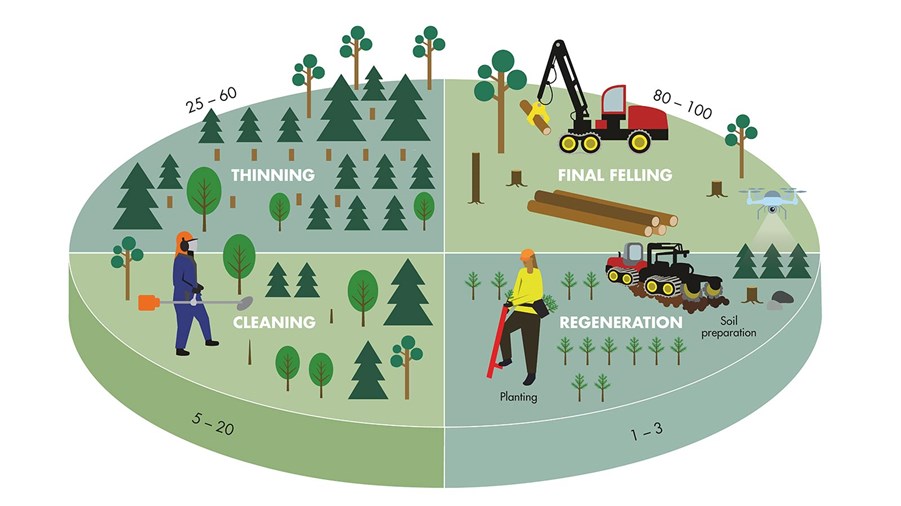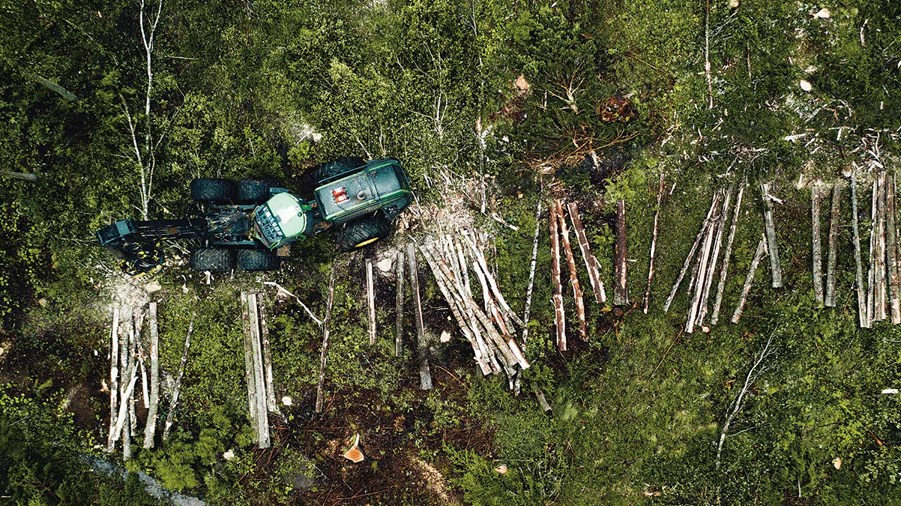
Of Sweden’s 320,000 forest owners, the majority use even-aged forestry. This means that forest management follows a cycle of different phases, just like in agriculture. The difference is that the forest’s cycle is far longer, between 60 and 100 years, depending on the land’s fertility and where in Sweden it is. In southern Sweden trees can grow almost twice as fast as in the north.
The cycle begins when the forest owner plants trees, and then clears and thins around them as they grow. Meanwhile the forest is closely monitored to detect threats such as insect pests, storms and fires in time. When the time for harvesting comes, the majority of the trees in the stand are felled on a single occasion. Some trees, usually about five to ten per cent of the volume, are left to preserve flora and fauna habitats, and to make it look less like a clear-cut area. After felling, new trees are planted and the cycle continues.
Since the early 20th century, it has been law in Sweden to re-forest after harvesting. For every fully grown tree felled, at least two and usually more new ones are planted. This is an important foundation of sustainable forest management, the aim being to ensure that future generations can have and use as much forest as we do.


